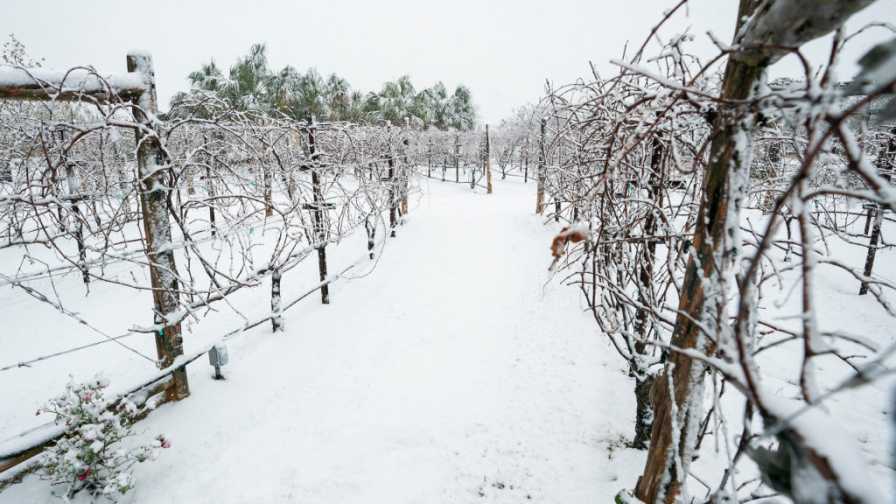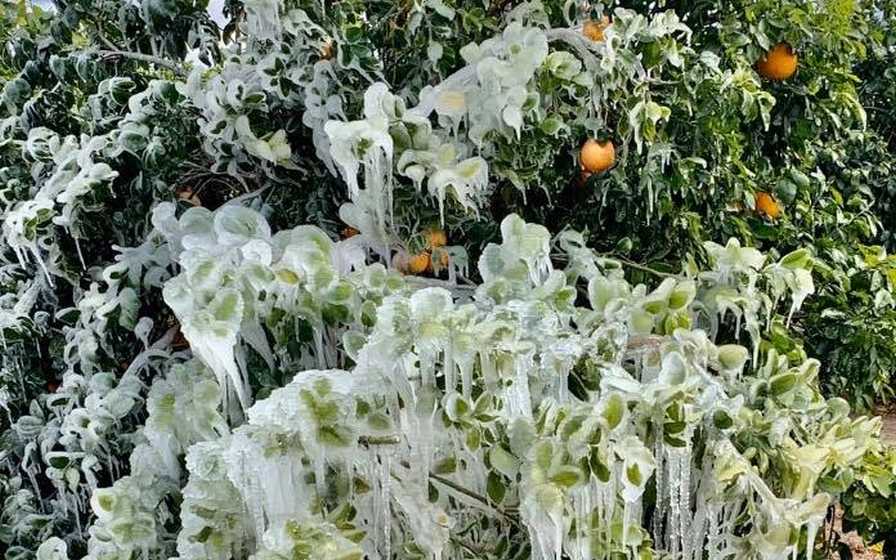Winter Storm Toll on Texas Ag Tops $600 Million

Winter Storm Uri left ag producers in Texas out in the cold — literally. Early crop damage assessments are ringing up big losses.
Photo by Sam Craft, Texas A&M AgriLife
Winter Storm Uri, which blasted through the entire state of Texas, caused at least $600 million in agricultural losses, according to preliminary data from Texas A&M AgriLife Extension Service agricultural economists.
“A large number of Texas farmers, ranchers and others involved in commercial agriculture and agricultural production were seriously affected by Winter Storm Uri,” said Jeff Hyde, Ph.D., AgriLife Extension director, Bryan-College Station. “Freezing temperatures and ice killed or harmed many of their crops and livestock as well as causing financial hardships and operational setbacks. And the residual costs from the disaster could plague many producers for years to come.”
AgriLife Extension estimates of some of the state’s biggest agricultural losses by commodity were:
- Citrus: At least $230 million
- Vegetables: At least $150 million
- Livestock: At least $228 million
AgriLife Extension Economist Luis Ribera said citrus producers in the Rio Grande Valley lost virtually all of their Valencia orange crop and more than 60% of their grapefruit crop.
“Even more citrus crops would have been lost had many not been harvested before the storm,” he said.
Along with citrus and other fruit losses, Rio Grande Valley and other South Texas producers also suffered some significant losses in terms of both cold- and warm-season vegetable crops.
Samuel Zapata, Ph.D., AgriLife Extension economist, Weslaco, said there were notable vegetable losses throughout the area.
“The main vegetable crop damage we saw was to onions, then to leafy greens, including spinach, collard greens and kale, and then to watermelons,” said Samuel Zapata, AgriLife Extension economist.
Another agricultural sector that experienced significant losses was the green industry. AgriLife Extension, in collaboration with the Texas Nursery and Landscape Association, developed and distributed a loss assessment survey to more than 4,000 nursery, greenhouse and other green industry-related businesses requesting input on the type and extent of losses encountered. It will be several weeks before there is sufficient data to provide an assessment of those losses.
According to Mark Waller, Associate Head of Texas A&M University’s Department of Agricultural Economics, Bryan-College Station, the agency can only provide a general range of loss or estimated overall loss for the state’s agricultural sectors.
“There are still many as yet unknown and lingering effects of Winter Storm Uri,” he said. “What we can say is these figures are conservative and we expect more losses as a long-term effect of this disaster.”
For more, continue reading at AgriLifeToday.Tamu.edu.










